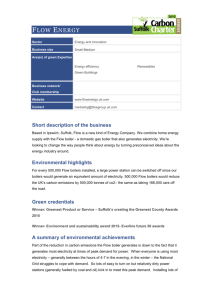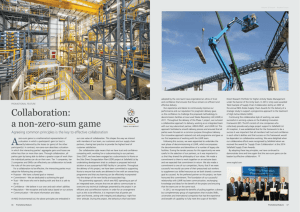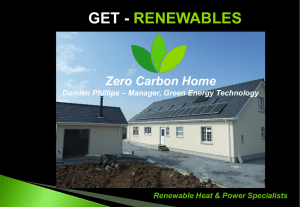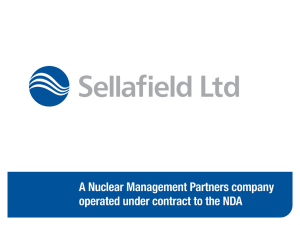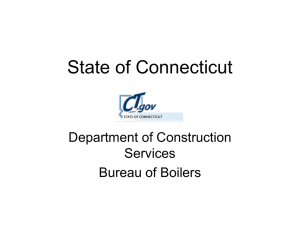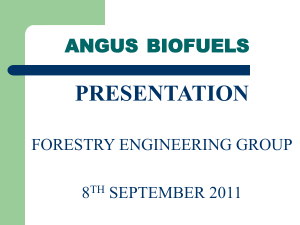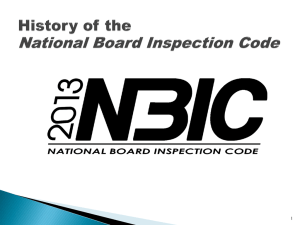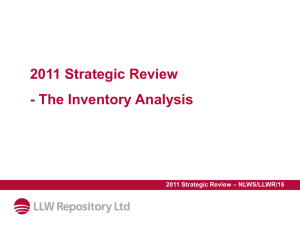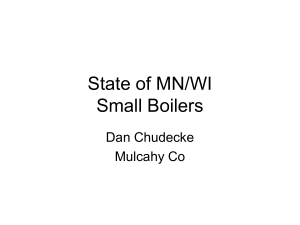(Magnox), Rachel O`Donnell (LLWR), Joe Robinson (Studsvik)
advertisement
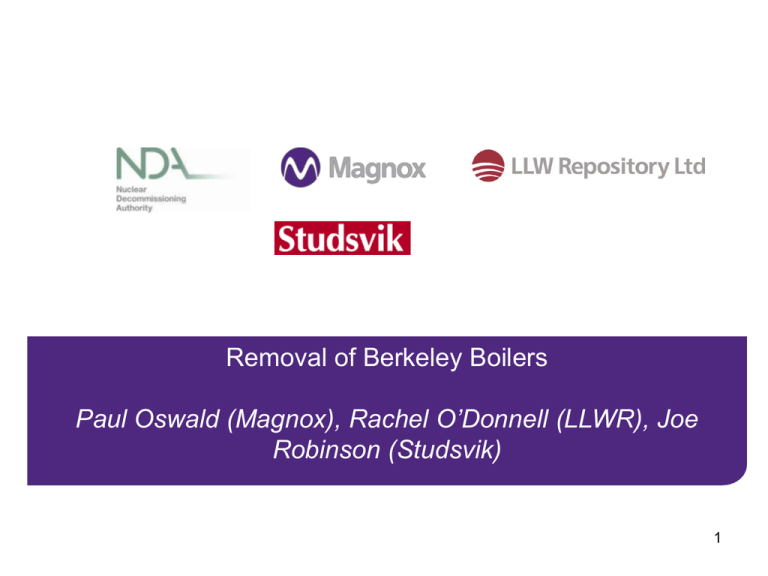
Removal of Berkeley Boilers Paul Oswald (Magnox), Rachel O’Donnell (LLWR), Joe Magnox Decommissioning Opitmisation Programme (MODP) Robinson (Studsvik) Overview 1 Background • Each reactor had 8 boilers (heat exchangers) housed externally to the reactor buildings • Boilers de-lagged and disconnected during decommissioning preps • Currently stored horizontally around each reactor (15 in total) • One boiler sized reduced on site in the 1990’s 2 Background • Each boiler is 21 meters long and 5 meters in diameter • Each weighs approx. 310 tonnes • 15 boilers originally planned to be left in situ until final site clearance 2074 • Very low levels of internal contamination present • Initiated graduate project to investigate options 3 Why now? • Business case aligns with overall national Low Level Waste (LLW) strategy (published Summer 2010) • For LLW metals - BPEO is to treat/recycle • Early solutions found now, rather than at final site clearance • Provides base load for supply chain • Noticeable change to the site skyline • Remains LLW if stored to final site clearance on site, so why not do it now! 4 Graduate Project • Graduate Project – to under take initial ground work • Five work streams with mentors Waste Size Reduction Transport Business Case Characterisation and historical data 5 Project initiation and definition • Graduate Project – background work • Transportation feasibility studies completed (Studsvik & Energy Solutions) • Business case completed • Additional funding secured for Berkeley Site 6 Project initiation and definition • Early collaboration with LLWR • Optioneering undertaken to determine Best Available Technique (BAT) • LLWR framework used to engage supply chain 7 Programme • Contract award: • Inaugural meeting: • Highways Agency – Special Movement Order approval: • TFS Approval: • Readiness review: • Lift 1st boiler: • Transport 1st boiler: • Transport 5th boiler: 4th November 2011 16th November 2011 12th January 2012 19th January 2012 28th February 2012 1st March 2012 23rd March 2012 29th March 2012 8 Commercial – utilising LLWR Waste Services Contract Magnox Waste Services Contract LLWR Metal Waste Services Framework EnergySolutions Nuvia Studsvik 9 Project relationships Magnox LLWR Studsvik ALE Role: Heavy-lift and transport contractor Assystem Role: Engineering substantiation COSTAIN Role: Boiler preparations and on-site civil enabling works Oceaneering Role: NonDestructive Examination 10 Scope of works for Lot 1 - Five boilers • Stakeholder Engagement • Regulatory approvals • Enabling Works – Engineering – Substantiation – Site Preparation • Lifting & Site Transport • Off site Transport • Treatment • Secondary Waste – LLW – LLWR – C14 – Magnox Ltd. – Recycled steel – Swedish market 11 Enabling works • Trans-frontier shipment application – approved • Special order – granted • Substantiation • Integral tasks that must be completed before lifting can commence 12 Stakeholder Engagement • • • • • • • • • • Early introduction to SSG Early liaison with E.A. Site Inspector Presentation to SSG giving detail following transport feasibility study Attendance at various public events in and around Berkeley (Berkeley Christmas Fair, Business Forum breakfast) Continuing liaison with E.A. – close involvement in the development of the BAT Regular presentations giving updates for Site personnel Fortnightly project update to key stakeholders across Magnox Ltd Presentation to SSG by the supply chain Planned flyer drops giving detail of dates and times for vehicle movements Key stakeholder event recognising the first Boiler being removed from site 13 Lifting and site transport • Jacking and skidding • Self propelled modular transport (SPMT) 14 Transport to Sharpness Docks • Route survey undertaken as part of the transport study. • Telephone cables • Utilities • Street furniture • Bridges/culverts • Tree trimming • Road closures 15 Shipping operations 16 Studsvik Nuclear Site Deep sea Harbour Storage and processing area Temporary Storage Processing Secondary Waste Volume: 13-15m3 ~95%+ Volume: ~ 600 m³ Weight: ~25 tonnes ~90%+ Weight: ~ 310 tonnes Processing • • • • • Size reduction Recovery of loose material Decontamination of internal surfaces Smelting Casting of ingots for free release – Melting of metal ensures robust characterisation analysis – Representative sample “pucks” – Metal is restricted release 21 Secondary Waste Management • Volume reduced waste consists of a concentrate including the radioactive nuclides to be returned • All secondary waste packages are analysed for radiological content • A comprehensive final report is generated during processing with radiological analysis data • Use of standard packages for return of secondary waste 22 Where we are currently • Phase 1 site operations and transport successfully completed • 5 Boilers in Sweden • Size Reduction underway on first boiler 23 Film The film may be viewed on the Mediasite 24 Conclusions • Cross SLC’s working in partnership to deliver decommissioning solutions • Early and open engagement with supply chain to identify possible solutions • Effective team work from all players: Magnox, LLWR and Studsvik – focused on delivery • Clear demonstration of decommissioning in progress at Berkeley 25 Questions 26
